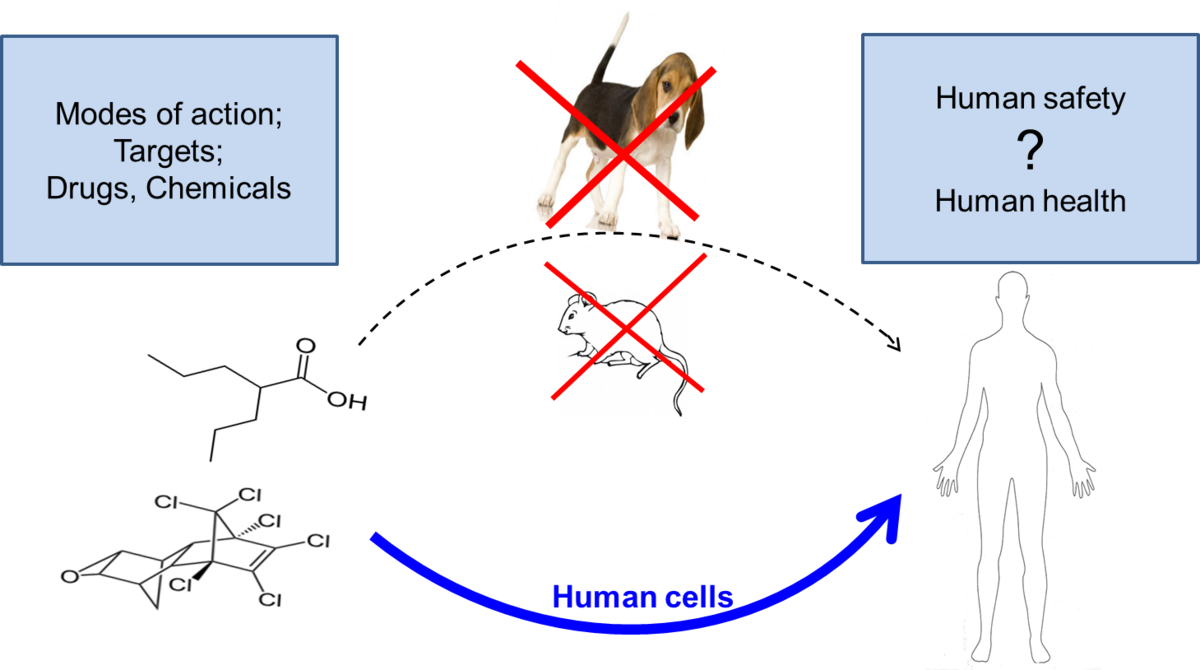Neurotoxicity
In our group, new cell models and endpoints are being established and used to obtain information relevant for human health and safety without animal experiments. One example is the evaluation of new flame retardants, synthesized and developed to replace poly-brominated PBDE compounds that are being phased out because of toxicological concerns (ref 1).
In this area we develop 2D and 3D models, especially for toxicity to dopaminergic neurons (ref. 2), and we combine neurons with other cell types to generate more complex environments for pharmacological studies of neuro-protectants (ref. 3) and for studying toxicant metabolism and action (ref. 4)

Example references:
- Hirsch C, Striegl B, Mathes S, Adlhart C, Edelmann, M, Bono E, Gaan S, Salmeia KA, Hölting L, Krebs A, Nyffeler J, Pape R, Bürkle A, Leist M, Wick P, Schildknecht S. (2017) Multiparameter toxicity assessment of novel DOPO-derived organophosphorus flame retardants.
Arch Toxicol 91, 407-425 - Smirnova L, Harris G, Delp J, Valadares M, Pamies D, Hogberg HT, Leist M, Hartung T (2016) A LUHMES 3D dopaminergic neuronal model for neurotoxicity testing allowing long-term exposure and cellular resilience analysis.
Arch Toxicol 90, 2725-2743 - Efremova L, Schildknecht S, Adam M, Pape R, Gutbier S, Hanf B, Bürkle A, Leist M (2015) Prevention of human dopaminergic neurodegeneration in an astrocytes co-culture system allowing endogenous drug metabolism.
Br J Pharmacol,172, 4119-4132 - Schildknecht S, Pape R, Meiser J, Karreman C, Strittmatter T, Odermatt M, Cirri E, Friemel A, Ringwald M, Pasquarelli N, Ferger B, Brunner T, Marx A, Möller H, Hiller K, Leist M (2015) Preferential extracellular generation of the active parkinsonian toxicant MPP+ by transporter-independent export of the intermediate MPDP+.
Antioxid Redox Signal 23, 1001-1016.
